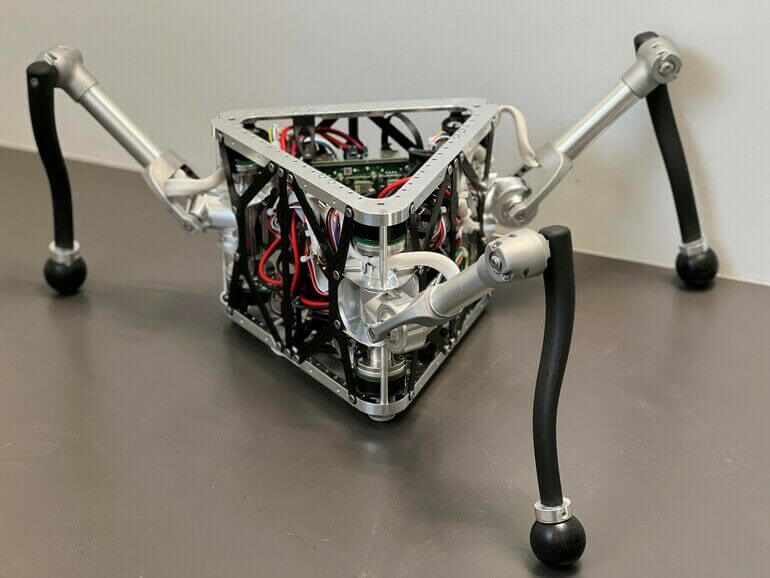We’ve said it before and we’ll say it again. 3D printed space stuff is cool. It’s just as well because this year is turning out to be a boon for 3D printed space hardware stories, and this one is no exception.
The Swiss Federal Institute of Technology (ETH) Zurich has teamed up with composite engineering company Scheurer Swiss GmbH to produce a bouncing space robot that will utilize a bouncing motion to traverse a low gravity asteroid, much like the hopping Japanese MINERVA-II-1 robots that bounced along the surface of the Ryugu asteroid back in 2016.
The Swiss hopper is designed by ETH Zurich and will be 3D printed by Scheurer Swiss using carbon fiber composite printing. You can see the robot in the image below.

The Spacehopper robot has only three legs, as it was found to be the optimal design in terms of weight reduction, and it can land in any orientation. The bouncing and landing itself will be fully controlled unlike previous asteroid hoppers, and it has been trained for optimal hopping using AI and deep reinforcement learning here on Earth.
“One of the challenges was to make the legs as thin-walled as possible to minimize the overall weight of the robot. Nevertheless, they have to withstand the forces of the bouncing impact,” said Mechanical Designer Emma Steinke.
“We are glad to have Scheurer Swiss on our side as a lightweight design expert. The competent expertise around state-of-the-art fibre composite technologies and 3D printing as well as the large network of Scheurer Swiss were very valuable for us and contributed to the success of our focus project from the very beginning.”

Possible target asteroids for the little robot include Ceres, Psyche and Ryugu. Ceres has water which can be used as propellant for the robot, Psyche has a metallic core and can contain metals such as gold and platinum, and Ryugu is close to Earth so provides a good testing ground for experimental robots such as the Spacehopper.
“Carbon reinforced 3D printing is ideally suited for the robotic components because virtually any shape can be produced,” said Dominik Scheurer, CEO at Scheurer Swiss.
“Hollow bodies, such as the robot’s legs, can be provided with support structures to stabilize them without weighing them down unnecessarily. Additive manufacturing is the ideal manufacturing process for this, and it’s very cost-effective.”
It is not clear from press material what kind of CF printing is being used in this application, however, the company social media pages show a lot of thermoplastic CF printed parts, possibly utilizing some form of chopped CF thermoplastic such as PEEK CF and printed with an FDM/FGM type process. That’s just a mildly educated guess however, so don’t hold us to that.
Although the legs in the photo appear to be the only piece that is 3D printed, the company website states that the electronics enclosure can also be 3D printed with a CF composite.
For more information about the Spacehopper, you can head on over to the project website at this link.










